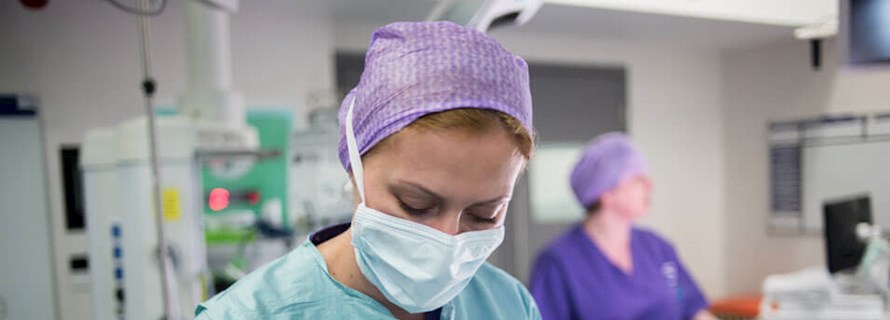Peroneal tendon surgery
Peroneal tendon repair
Peroneal tendons keep your ankles steady; if they rupture and tear, we can carry out surgery to repair or reconstruct a dislocated peroneal tendon
What are peroneal tendons?
Peroneal tendons in your lower legs keep your ankles steady while you run, walk and play sport.
Sometimes, they can rupture and tear because of injury or gradually over time. When this happens, our orthopaedic surgeons can carry out peroneal tendon surgery.
Sometimes, they can rupture and tear because of injury or gradually over time. When this happens, our orthopaedic surgeons can carry out peroneal tendon surgery.
Need to know
-
What happens during peroneal tendon surgery? icon plus
You'll receive a general anaesthetic before your surgery. Your consultant will then make several keyhole-size cuts to gain access to the ruptured tendons. They'll then use a stitching technique to repair the tendons before closing the wound. -
How to prepare icon plus
Your consultant will explain the procedure to you during a pre-surgery screening. They'll also answer any questions you might have and explain any risks and side effects. It's likely you'll be asked to limit your food or drink in the hours leading up to your procedure. -
After surgery icon plus
After your surgery, your foot may be immobilised using a walking (aircast) brace. Your consultant or specialist nurse will explain how to care for this and when it can be removed. They'll also let you know if you need to arrange a follow-up appointment.
Our foot and ankle consultants
We're proud to work with leading orthopaedic experts specialising in conditions and injuries to the foot and ankle, and whose skills are matched by their integrity and compassion.




Our locations
From complex foot and ankle surgery to straightforward procedures, we provide exceptional orthopaedic care across our network of hospitals, outpatient centres and specialist clinics.
Book a foot and ankle appointment
We're happy to help you make an appointment with one of our experienced foot and ankle consultants. We can also make imaging and outpatient physiotherapy appointments for you.
Call us today
020 7079 4344
This content is intended for general information only and does not replace the need for personal advice from a qualified health professional.